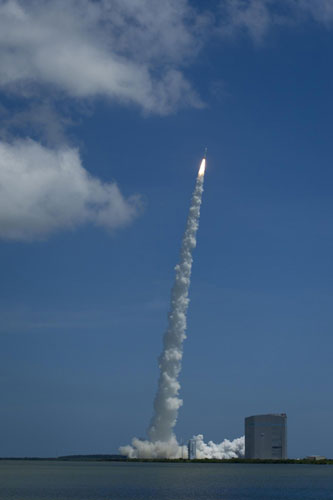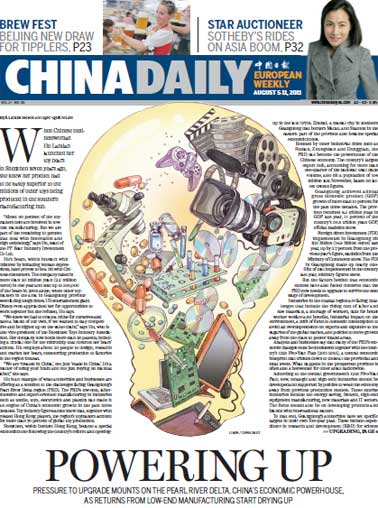Photos
NASA spacecraft begins 5-year trip to Jupiter
Updated: 2011-08-06 11:45
(Agencies)
CAPE CANAVERAL, Florida - A sun-powered robotic explorer named Juno is rocketing toward Jupiter on a fresh quest to discover the secret recipe for making planets.
Hundreds of scientists and their families and friends - among thousands of invited guests - cheered and yelled "Go Juno!" as the unmanned Atlas rocket blasted into a clear midday sky Friday. It will take five years to reach Jupiter, the solar system's most massive and ancient planet.
|
|
"It's fantastic!" said Fran Bagenal, a planetary scientist at the University of Colorado at Boulder, who is also part of the NASA project. "Huge relief all around."
Within an hour of liftoff, Juno hurtled out of Earth's orbit at 24,000 mph (38,600 kph) on a roundabout course for Jupiter. It was expected to whip past the orbit of the moon in half a day, or early Saturday morning.
It is the first step in Juno's 1.7 billion-mile (2.74 billion kilometer) voyage to the gas giant Jupiter, just two planets away but altogether different from Earth and next-door neighbor Mars.
Juno is solar powered, a first for a spacecraft meant to roam so far from the sun. The three huge solar panels popped open an hour into the flight, each one stretching as long and wide as a tractor-trailer. Previous spacecraft to the outer planets have relied on nuclear energy.
With Juno, scientists hope to answer some of the most fundamental questions of our solar system.
"How Jupiter formed. How it evolved. What really happened early in the solar system that eventually led to all of us," Bolton said earlier in the week.
Bolton said Jupiter is like a time capsule. It got most of the leftovers from the sun's creation nearly 5 billion years ago - hence the planet's immense size - and its enormous gravity field has enabled it to hold onto that original material.
Jupiter is so big it could contain everything in the solar system, minus the sun, and still be twice as massive. Astronomers say it probably was the first planet in the solar system to form.
Juno will venture much closer to Jupiter than any of the eight spacecraft that have visited since the 1970s, most of them just passing by. It's by far the most focused and elaborate Jupiter mission.
"We look deeper. We go much closer. We're going over the poles. So we're doing a lot of new things that have never been done, and we're going to get all this brand-new information," Bolton said.
The $1.1 billion mission - which will end with Juno taking a fatal plunge into Jupiter in 2017 - kicks off a flurry of astronomy missions by NASA.
Next up is Grail, twin spacecraft with a $496 million price tag that will be launched next month and go into orbit around Earth's moon. Then comes the $2.5 billion Curiosity, a six-wheeled, jeep-size rover that will blast off for Mars at the end of November in search of environments conducive to life.
Unlike many other NASA missions, this one came in on cost and on time. It's relatively inexpensive; the Cassini probe launched in 1997 to Saturn, by way of Jupiter, cost $3.4 billion.
Exploring the solar system is all about "unlocking the mysteries of how we got here" and is worth the money it takes to get those answers, said Jim Adams, NASA's deputy director of planetary science.
"These investments are really in ourselves," added Bolton.
E-paper

My Chinese Valentine
Local businesses are cashing in on a traditional love story involving a cow herder and a goddess
Outdoor success
Lifting the veil
Allure of mystery
Specials

Sowing the seeds of doubt
The presence in China of multinationals such as Monsanto and Pioneer is sparking controversy

Lifting the veil
Beijing's Palace Museum, also known as the Forbidden City, is steeped in history, dreams and tears, which are perfectly reflected in design.

Beer we go
Early numbers not so robust for Beijing's first international beer festival

